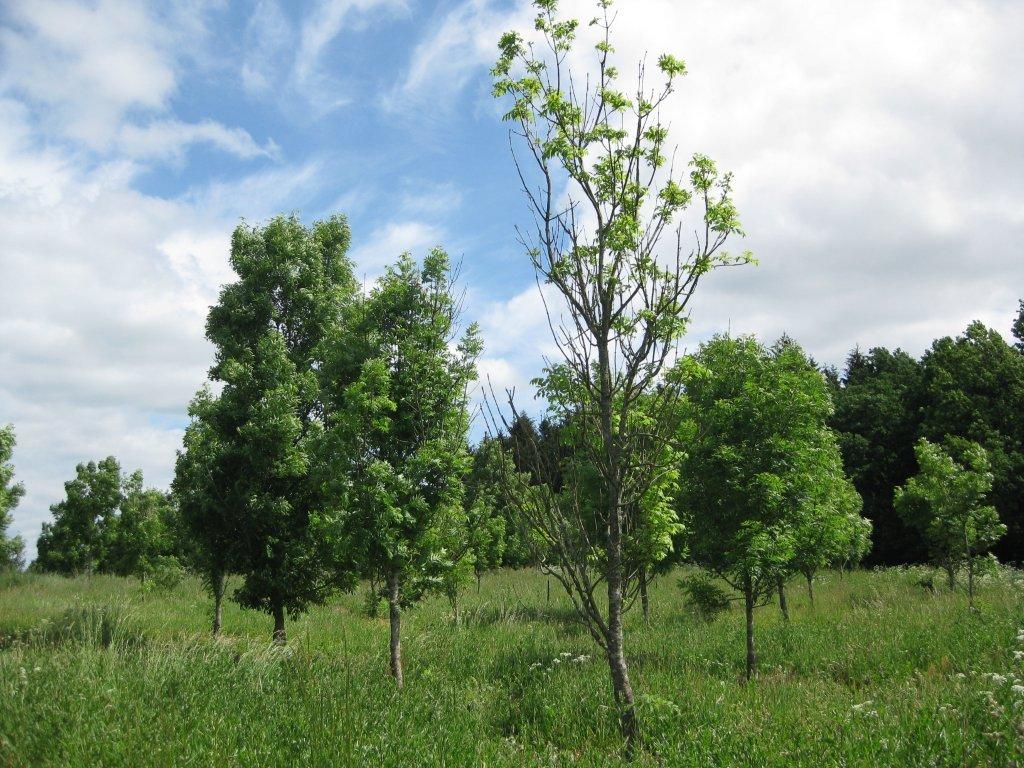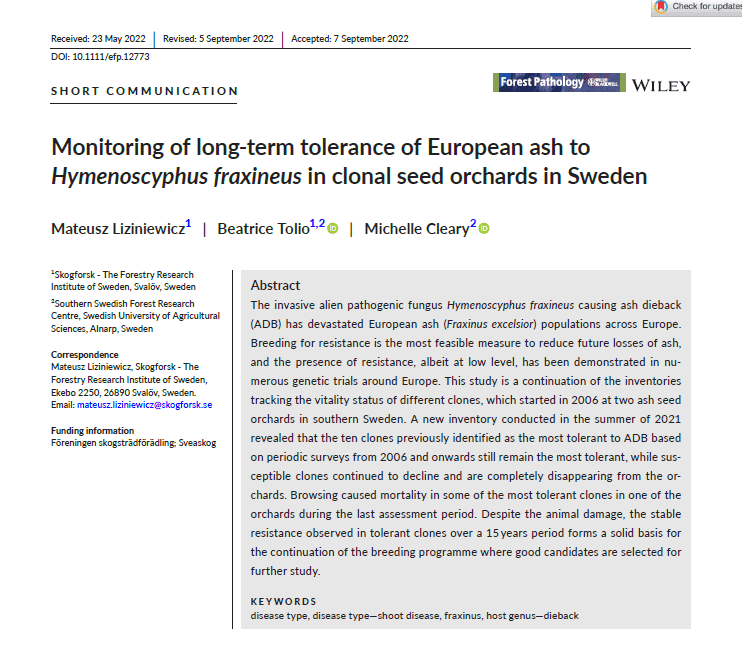In September 2022, our research group published a new exciting article: “Monitoring of long-term tolerance of European ash to Hymenoscyphus fraxineus in clonal seed orchards in Sweden”. This study is a continuation of the inventories tracking the vitality of different ash trees, started in 2006 by researcher Lars-Göran Stener in two seeds orchards in Southern Sweden. In summer 2021, the vitality of the same ash trees was monitored with a new inventory.
The two seed orchards are located in southern Sweden (Snogeholm and Trolleholm) and were established in 1992 and 1995, respectively, to produce seeds for commercial forestry purposes. Since the establishment of the disease, Lars-Göran Stener has monitored these seed orchards in 2006, 2010 and 2016. In summer 2021, the health condition and the damage caused by ash dieback has been assessed in both seed orchards. Tree vitality was scored using a scale from 1 to 9, where 1 indicated low vitality and 9 very good vitality. The crown damage was scored as a percentage of crown dieback where class 0 indicated no damage, class 1 indicated low damage (up to 10% of the crown exhibited dieback), and class 9 indicated very serious damage (up to 90% of the crown exhibited dieback). An example of different tree vitality and crown damage is shown in the following picture. On the left a susceptible ash tree and on the right a tolerant ash tree at Trolleholm seed orchard:

This new inventory confirmed that there are differences among trees in susceptibility to the disease. The ten clones previously identified as the most tolerant to ash dieback based on periodic surveys from 2006 and onwards still remain the most tolerant, while susceptible clones continued to decline and are completely disappearing from the orchards. Tree mortality in both seed orchards started to slow down as many susceptible genotypes had already succumbed to the disease and the ongoing natural selection favours only the most tolerant individuals. The stable resistance observed in tolerant clones over a 15 years period forms a solid basis for the continuation of the breeding programme where good candidates are selected for further study.
Some of these trees have been propagated and planted in field trials together with some ash trees that were reported through Rädda Asken campaign. Every summer we are monitoring their health conditions. Thanks to your contribution now we have many more ash trees to propagate and test in order to continue building up a resistant European ash population and save this noble broadleaved species.
For detailed information, here is the link to our publication:
https://onlinelibrary.wiley.com/doi/10.1111/efp.12773
Beatrice, Mateusz, Michelle

